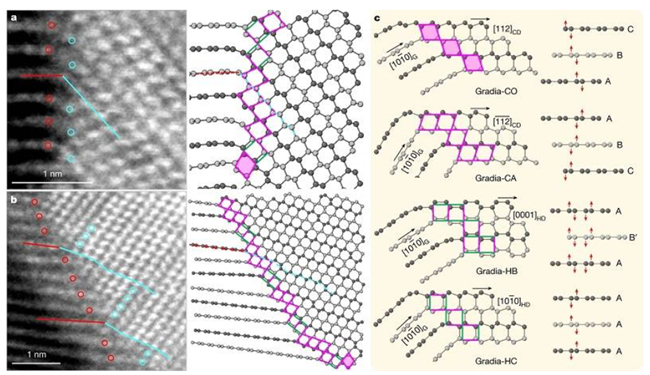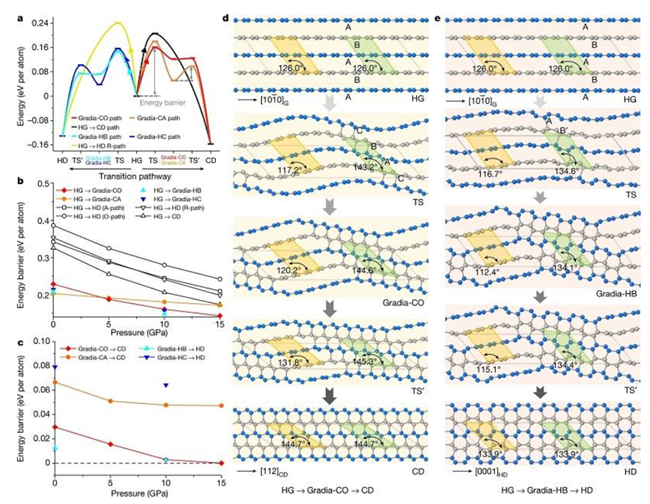Graphite Plus Diamond: A New Type of Composite Nanomaterials — Nankai University Joined in the Research for the Synthesis of New Carbon Material
Recently, Yanshan University, Nankai University and some other institutions have collaborated to resolve the long-standing problems about the pathways of the graphite-to-diamond phase transition with high-pressure synthesis method. A new type of graphite-diamond composite material, which combines the electrical conductivity of graphite, the superhardness of diamond, and high toughness that neither graphite nor diamond possesses, has also been created and added to the family of carbon materials. The work has been published in Nature [Nature 607 486–491(2022)].

Figure 1. The observed graphite-diamond composite structure
For the first time, the research team has intercepted and determined the structure of coherent graphite−diamond interfaces in partially transformed graphite samples treated under static high-pressure conditions, and then elucidated the mechanism of graphite-to-diamond transformation under static high-pressure conditions. To complete the transformation, graphitic layers, through sp2-sp3 hybridization occurring at part of them, form a specific coherent graphite-diamond structure, through which the diamond section grows like seeds on the graphitic layers, and then finishes the graphite-to-diamond transformation. During the transformation, graphite and diamond have different structural motifs with similar stability, which results in high structural variety at the nanoscale. This variety of coherent nanostructure further leads to rich nanostructures in the diamond section, such as stacking fault, twin crystal and diamond polytype, which provides ideas and feasible methods for further design of graphite-diamond nanostructures.

Figure 2. The graphite-diamond pathways and barriers based on observation
The observed graphite-diamond composite structure, named Gradia, has excellent mechanical and electrical properties. It has a Knoop hardness between 51 and 115 GPa, and a room temperature resistivity adjustable between 8×10-4 and 4.9×105 Ω·m. Its fracture toughness is high and cannot be measured by conventional indentation methods, indicating that gradia, through interfacial bonding, possesses excellent toughness beyond graphite and diamond. The most important thing is that these excellent properties can be adjusted by regulating graphite-diamond sizes and ratios and adopting different types of interfacial structures, which makes Gradia a new generation of designable and controllable high-performance carbon materials with superior properties of electrical conductivity, superhardness, and extreme toughness.
The paper's co-first authors are Dr. Luo Kun, Dr. Liu Bing, Dr. Hu Wentao and Associate Prof. Dong Xiao. The correspondent author is Prof. Zhao Zhisheng. Associate Prof. Dong Xiao from Nankai University, as the paper's co-first author, is responsible for the research on the pathways of phase transition, the projection of barriers and the analysis of kinetic stability.
Links to the paper: https://www.nature.com/articles/s41586-022-04863-2
(Edited and translated by Nankai News Team)









